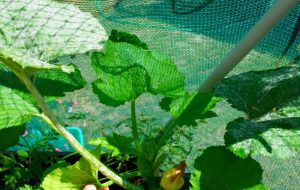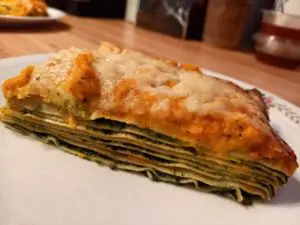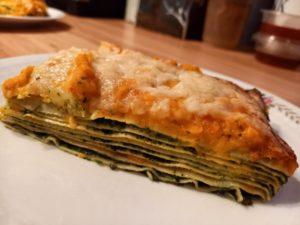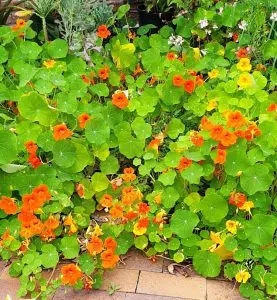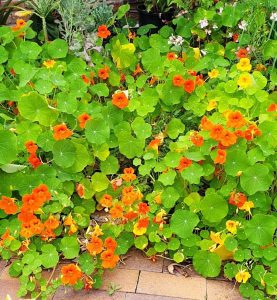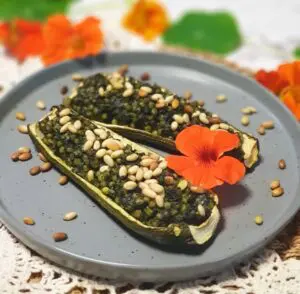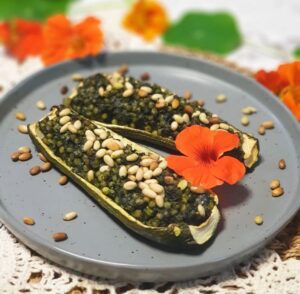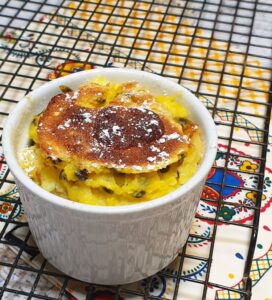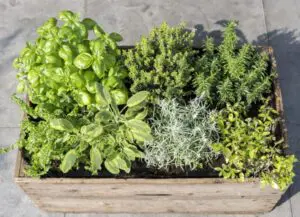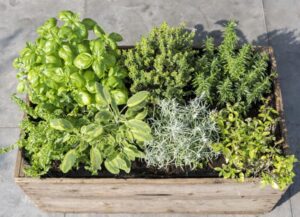When I built our first raised vegetable garden beds 10 years ago there was no such thing as "kid friendly" or "vegetable friendly" treated pine wood, so I decided to line the inside of the sleepers with builders plastic just in case there was a risk of chemicals used in treating the sleepers (such as arsenic) leaching into the surrounding soil and contaminating our food crops.
Should I have really been worried? Well, I suppose it's always better to be safe than sorry; even though at the time, I could not find any evidence backing the rumour (and that's all it was) that chemicals from treated pine actually leaches into the soil and is taken up by the plants that grow in the bed.
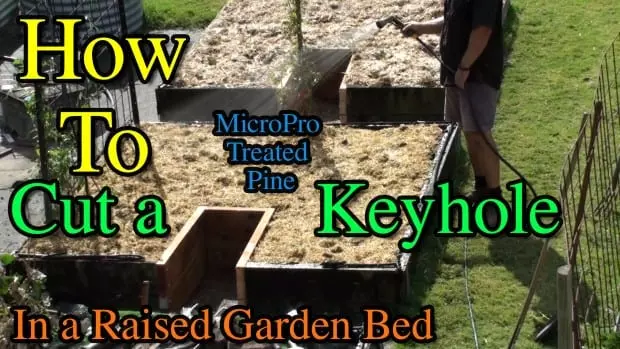
Deep down, I find it difficult to believe that plants would take up any toxic chemical and store it for our unwitting consumption. Plants have evolved to select certain specific nutrients and minerals (and water of course) through its root system in order to maximise healthy growth. Therefore, the thought of a plant ingesting anything other without getting sick or dying doesn't seem plausible to me.
Sure, plants can come into direct contact with pathogens or chemicals or even spoil after harvest but taking up arsenic or some other foreign chemical from the soil into the plants system seems unlikely. Although, I do get how a salad crop or other fast growing vegetables could harbour bad bacteria, for example, in a case where they were grown in sewage or handled incorrectly during packaging/retail but that's different.
And, still to this day I have never seen any conclusive study proving treated pine is dangerous when used for building vegetable garden beds. Nevertheless, the threat (perceived or otherwise) was enough for consumers like myself to line the beds or use other materials instead of treated wood when constructing raised garden beds.
This "threat" has lead to new research being done and consequently safer products or ways being developed to treat wood that is certified safe to use in gardens and around children whilst still protecting it from rot and pests like termites. I guess overall that is a good development and one of these products now being sold worldwide is a treated pine called Micro Pro Sienna, which was developed in Canada and uses a micronized wood preservative technology instead of harsh chemicals like arsenic to treat the wood.
This new type of treatment claims to protect wood for 50 years and has won several green and environmental awards. I'm not sure how long it has been around on the world market but I have only just recently noticed its availability at my local hardware store (Bunnings) and only in the 2.4m x 200mil x 50mil (21/2 inch) wide sleepers. Micro Pro (Aust) say they do make a 75mil (3 inch) wide sleeper, however, my store doesn't stock it, which is a shame because I originally made my first three raised beds from the wider 75mil treated pine sleepers and it would have been handy to get 75mil Micro Pro sleepers for my retrofit keyhole project.
But it wasn't to be… Therefore, I used the 50mil instead and it worked out totally fine anyway. The price per sleeper was comparable to the old treated pine perhaps a few dollars more but still much cheaper than hardwood and it should last longer than hardwood also.
The keyhole retrofit
Now to the build: Because my initial raised beds (built 10 years ago) were made simply by stacking the 2.4 metre lengths together to form a big square, I unknowingly (at the time) created a void in the centre of the beds that could not be reached from the sides. This meant, I would need to get into the raised bed to plant or weed the centre and I soon found out what a pain this was to do. It wasn't so much the getting into and out that bothered me it was more that the action of stepping into the bed compacted the soil and also when the bed was full of produce getting in to pull weeds or maintain crops inevitably involved trampling down healthy plants by accident.
Therefore, I decided to adapt the purpose of this central area by not using it and turning the space into a platform for a potted plant or just nothing. I did this by laying down bricks or cement pavers so this central useless void in the middle of the 3 garden beds was at least as maintenance free as possible. Naturally, this didn't work too well and I found whilst it was better than leaving it as soil it still cost me plenty of time pulling weeds and grass.
Anyway, the years went by and I basically put up with the inconvenience of having this wasted space in the centre of our raised beds but this year I finally got around to fixing the issue once and for all and I did this by cutting a metre long keyhole into each garden bed (almost to the centre) giving access to all parts without having to actually get in the bed itself.
The job really wasn't too complex although it did take some time to complete and some effort to dig. I used 2.4m long sleepers (50mil wide) and coach screws/bolts to join them together and onto the existing 75mil treated pine sleepers. I cut the sleepers into three lengths 40cm, and 2 x 100cm to make the base and top of each keyhole.
When I cut out the area for the keyhole in the existing garden bed I was surprised to see how well the timber looked under the weathered and rotten exterior – it was in really good condition! My guess is we should get another decade or more out of these beds and I'm glad I didn't just change all the wooden sleepers for the sake of making the outside look all new again – that would have been a total waste of money.
Video of how to make a raised vegetable garden bed with keyhole
The best way to explain how this retrofit keyhole project was done is to make a video about it so that's what I did and you can see it below.
Conclusion
There are many different materials you can use to make raised garden beds – here's an article I wrote: Raised garden beds which type should I choose… if you would like some more info, but as I said in the video above if you are going to build a sleeper based garden bed then consider using the new type of MicroPro treated pine and ensure if you make them big squares then cut a keyhole!


